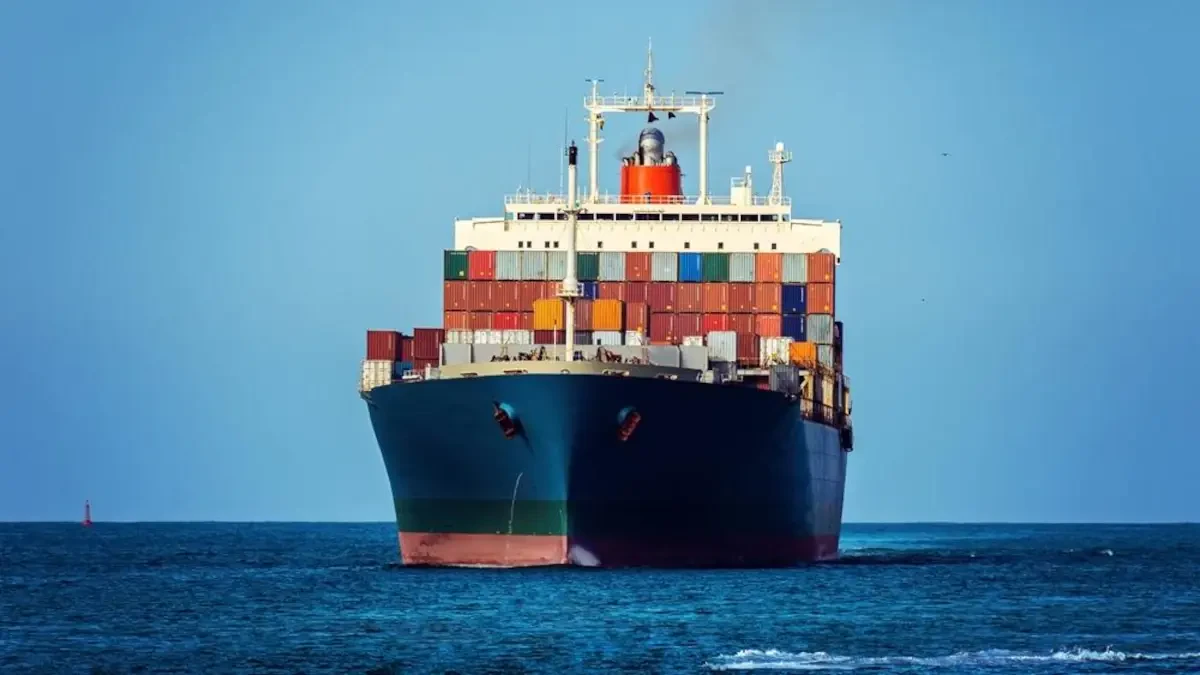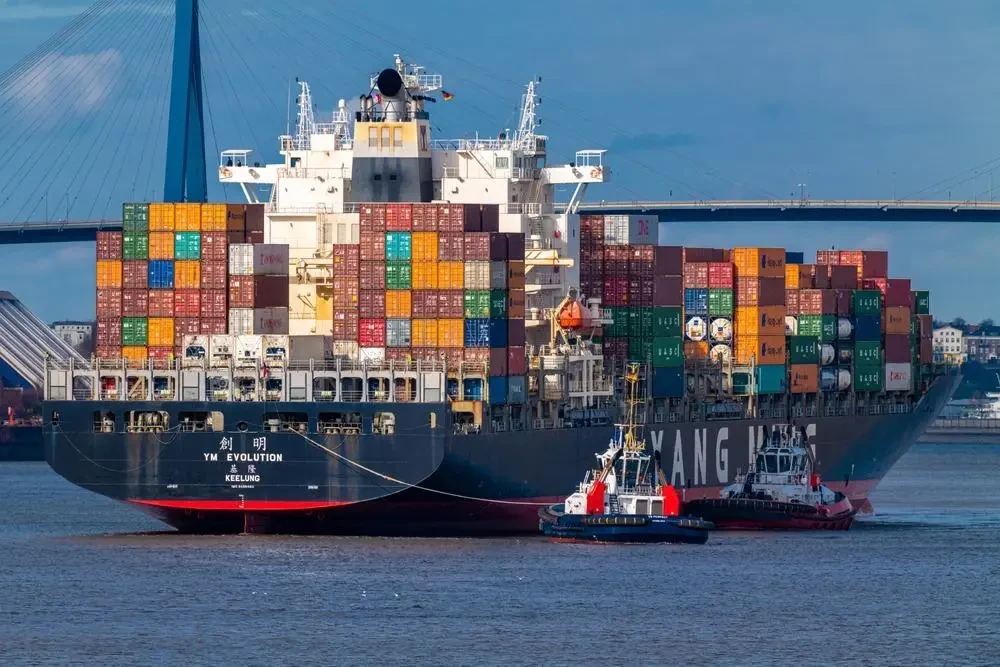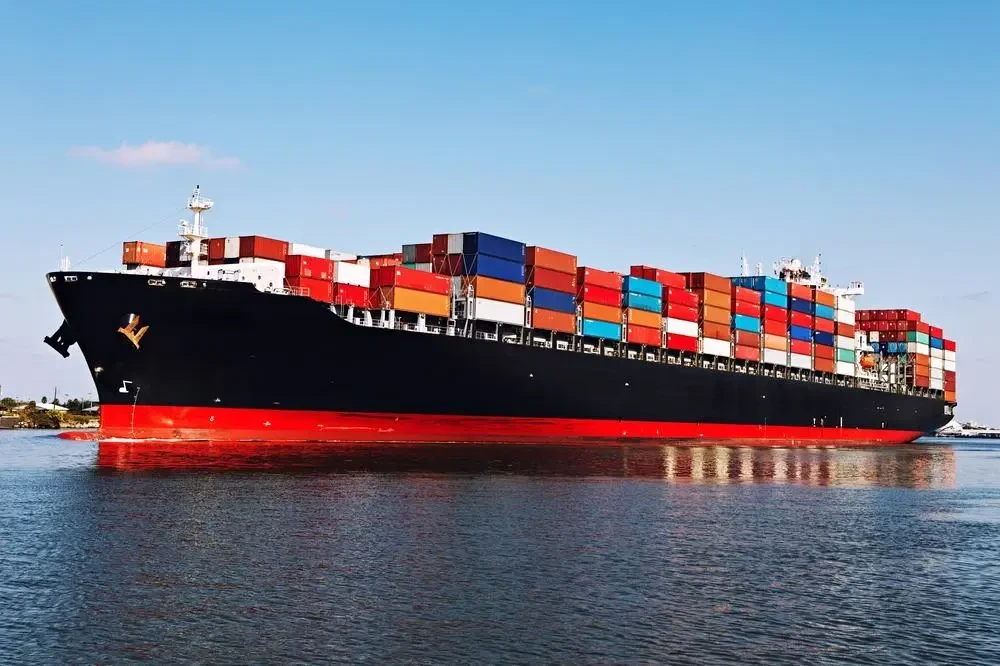Published by Chris Townsend
Last updated Nov, 14 2025

How Much Does It Cost To Ship A Container To United Arab Emirates?
Shipping a container to another country can be daunting. Just thinking about it can overwhelm the brain. Luckily, Three Movers is here to help you with your worries. We will help you understand the complexities of this operation, from its beginning until it reaches its destination. Our team of experts is willing to assist you in planning your shipment for a worry-free process.
Three Movers is an international carrier that delivers commercial goods door-to-door. We work with some of the world's largest companies and small businesses, offering them discounted shipping rates on container hauling services and door delivery. We are a top-rated shipment company that is here to help you with all of your needs!
Factors That Affect the Cost of Shipping
There are a few main factors to consider when international shipping. Distance is the obvious one. The further away your international shipments are from the departure port, the more they’ll cost. What you’ll be using as transport is another factor. Relocators will be slow but cost less. Air freight, on the other hand, will reach the destination faster but is an expensive option.
The volume or weight of the items will vary depending on your transport mode. The price is measured directly proportional to the number of items. It is important to remember that sea freights use volume and weight for air freight.
You have to consider the destination port and the season of the year, too. For United Arab Emirates Dispatching, Jebel Ali is one of the biggest ports in the country. The peak season for shipping is between August and October, as people are gearing up for back-to-school and holiday seasons. This will affect your shipping price.
Which Size of Shipping Container Works Best for Me?
Choosing the appropriate container for your shipment understandably raises many questions. Like most people, you can start by checking out the 20-ft or 40-ft containers. The former can fit the contents of a small household (about three bedrooms), while the latter can accommodate double the amount. Another way of visualizing it is that the 20-foot receptacle can fit 50-60 fridges. More than that, the best option would be to use a 40-foot.
You have two modes to choose from to make it better for you. If you want to fill the crates up to the last square inch, a popular option, you’d want to go with the Full Container Load option (FCL). If you don’t have enough items to fill a receptacle, you can always opt for the Less Then Container Load option (LCL).

Average Container Shipping Rates Estimates

FCL is best for transporting boxes, pallets, and anything requiring full container shipping to the United Arab Emirates of up to 45,000 lbs.
Full Container Load (FCL) Shipping Rates | |
|---|---|
| 20 ft Container | $855 |
| 40 ft Container | $1040 |

LCL is a more affordable way to transport less than container load shipments to the United Arab Emirates.
Less Than Container (LCL) Shipping Rates | |
|---|---|
| LCL | $60/CBM |
| Personal Effects | $460 |
| Household Goods | $575 |

International House moving to United Arab Emirates services - quick, easy, and cheap.
International House Moving Costs | |
|---|---|
| Partial House (2000Lbs & Less) | $445 |
| 1 Bedroom (3850 Lbs) | $1855 |
| 2 Bedroom (4500 Lbs) | $2530 |
| 3+ Bedroom (8750 Lbs) | $3255 |

International auto transport services to the United Arab Emirates via RoRo and container ships. Ship cars, trucks, SUVs, ATVs, boats, RVs, heavy equipment, and more.
Container Car Shipping | |
|---|---|
| Sedan via RORO | $940 |
| SUV via RORO | $1040 |
| Sedan (Container) | $1370 |
| SUV (Container) | $1460 |
Understanding the Different Types of Freight Transportation
You can choose from three types of cargo transportation methods: land, sea, and air.
Land freight transportation is the cheapest option but it is only available for countries connected by land.
Since you are shipping to the UAE, you can choose between sea and air cargo hauling. Relocating by plane is the fastest option, but it has certain restrictions regarding your shipment’s weight. Shipping via cargo ships is more lenient regarding weight since they account for volume. They are significantly slower than planes, but they are also cheaper.
Additional Shipping Costs
There are a few more shipping costs to be considered. This is normal and something to be expected. They are:
- Custom duties
- Container inspection fees
- General Rate Increase
- Inland delivery charges
- Quarantine fees
- Insurance
Insurance is important when dispatching your items. This can ensure that whatever happens, you are well-protected. Insurance fees usually depend on the monetary value of your items rather than the weight or volume.
What’s Next?
Now that you know how to start your process, your next step is to contact Three Movers for a free quote. You can fill out the web form or call us at (888) 202-0036.

Find Cargo Containers For Freight Transport & Relocation
Frequently Asked Questions
A shipping firm issues a Bill of Lading to a shipper (also known as a consignor) who sources and/or owns the products. It indicates that the goods have been received in good condition and are set to be delivered. The shipper will subsequently deliver the items to the agreed place.
A Bill of Lading is required for all shipments. When moving freight from point A to point B, a Bill of Lading is necessary (BoL). They’re legally binding documents that show who owns the items being transported.
Import taxes on commercial products are imposed by the UAE based on the following factors:
● Whether or if the company is based on the mainland or in a free zone.
● The nature of the items being transported.
● The origin and end destination of the items being transported.
● Agreements on trade between the UAE and the exporting country.
● Any additional laws that apply.
● Tariffs and charges for imports.
The UAE has adopted a GCC common tariff in general, with customs taxes set at 5% of the CIF value of most items. However, alcoholic, carbonated, and sweetened beverage goods are subject to a 50% duty, while e-smoking devices (together with the tools and liquids used in them) and tobacco products are subject to a 100% charge. Pharmaceuticals and agricultural items, for example, are free from customs charges. Please visit the Unified Customs Tariff webpage for more information on tariffs.
It is preferable to review the import laws of the United Arab Emirates to determine which papers are required. Your goods may be delayed or even stopped from reaching their intended destination if you do not have all of the required documents.
Prepare the needed paperwork ahead of time to minimize delays and ensure that your cargo arrives on schedule. The following are some of the most frequent documents needed when transporting a container internationally:
● Commercial and Proforma Invoices
● Bills of Lading
● Packing List
● Shipper’s Letter of Instructions (SLI)
● Automated Export System (AES) Filing
● Certificate of Origin (CO)
● Incoterms
● Safety Data Sheet (SDS)
● Operational Instructions
● Shipping Under a Letter of Credit
Both the FCL routes and processes are straightforward. The container will not be opened or modified after you’ve placed your things inside. It is delivered on time to the designated port, as per your contract.
LCL shipping entails dealing with numerous consignees, transporting products to various ports, and reworking containers. The major reason why this sort of package takes longer to arrive is because of this process.
A lost bill of lading might cause significant delays in the transportation of your cargo from the port or delivery to its end destination.
If you misplace your BoL, you should obtain a replacement from your shipping company. However, the shipping firm may charge a fee and require the following documentation in order to create a new bill of lading:
● A written statement of loss;
● Packing list;
● Cargo commercial invoice;
● Letter of Credit – copy (when payment was made by Letter of Credit);
● Shipper’s approval;
● Letter of indemnity, LOI drew up by the shipper;
● Letter of indemnity, LOI drew up by the recipient;
● Bank guarantee;
● Formal request: release without OBL or Issuance of New Set OBL
Freight forwarders are companies or individuals responsible for the logistical and physical conveyance of goods. They keep in touch with everyone involved in the shipping process. Freight forwarders are responsible for preparing and filling out a wide range of legal documents and documentation.
A customs broker is a firm or organization that helps importers and exporters comply with the import and export rules of a country.
An NVOCC is a carrier that does not own the vessels required to deliver cargo from a client. They accomplish this by leasing or purchasing empty space in existing containers and filling it with cargo from their clients. As a result, the NVOCC is seen as a “carrier” by clients, customs, and international agencies, and is liable for the cargo. NVOCCs and Freight Forwarders are comparable in that an NVOCC handles the majority of the duties that a Freight Forwarder does.
The maximum payload that may be transported is determined by the container capacity, design and quality. On the container’s doors and CSC plate, the capacity and measurement information is generally printed.
To give you an idea, the cargo capacity of a 20ft container is typically 25.000 kg/ 55.126 lb.
To lower shipping costs, consider consolidating your goods into a single container, choosing flexible shipping dates, and comparing rates from different carriers. Properly packing and labeling items can also prevent extra charges.


